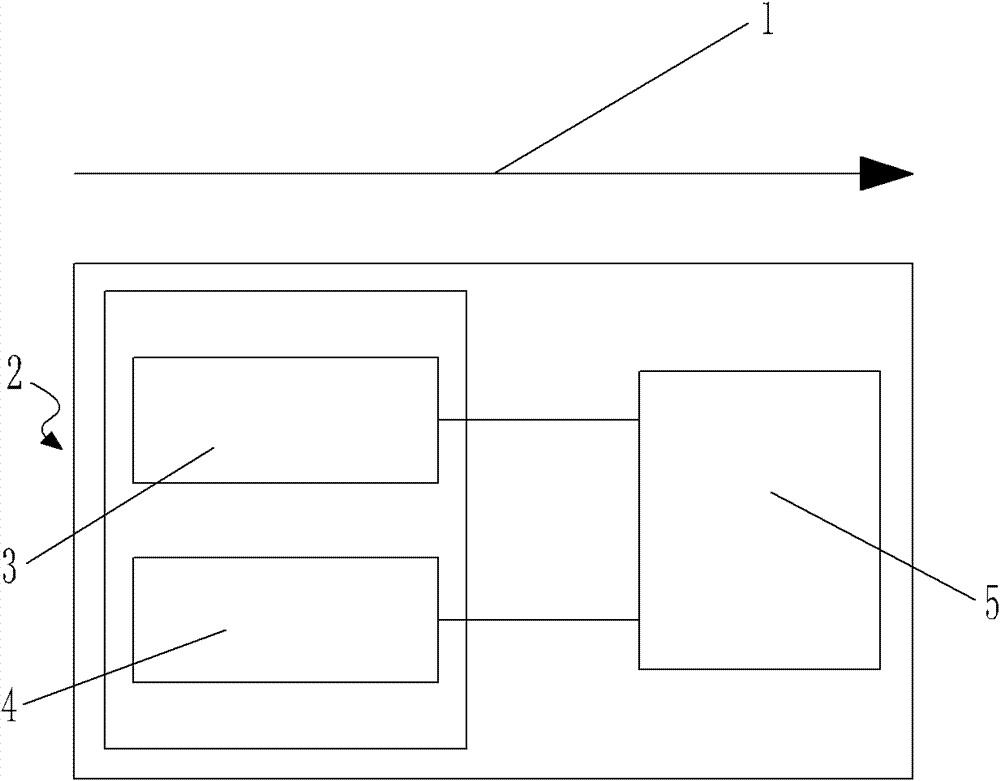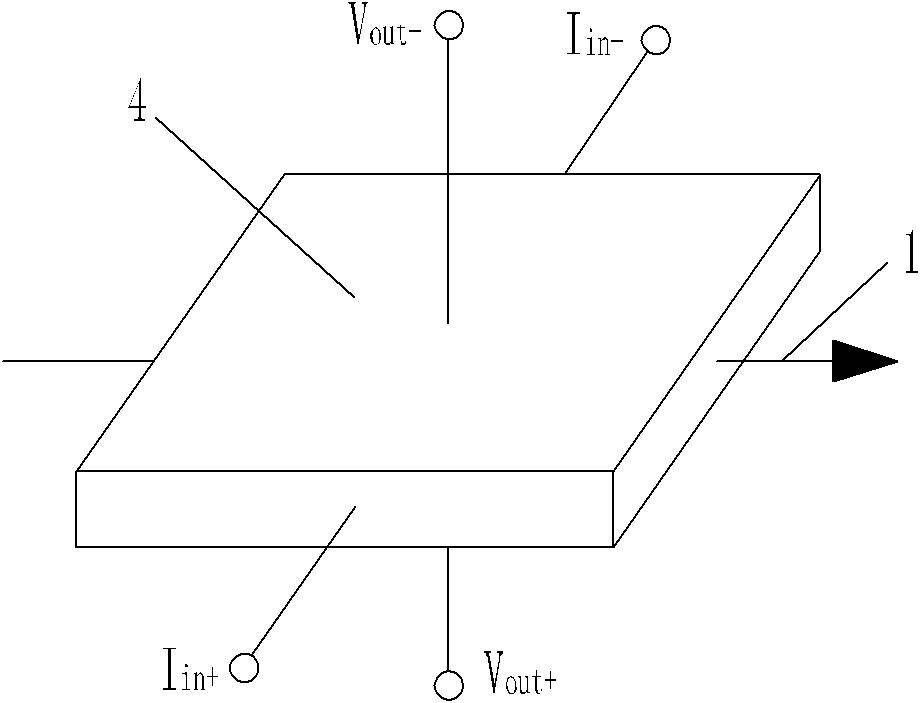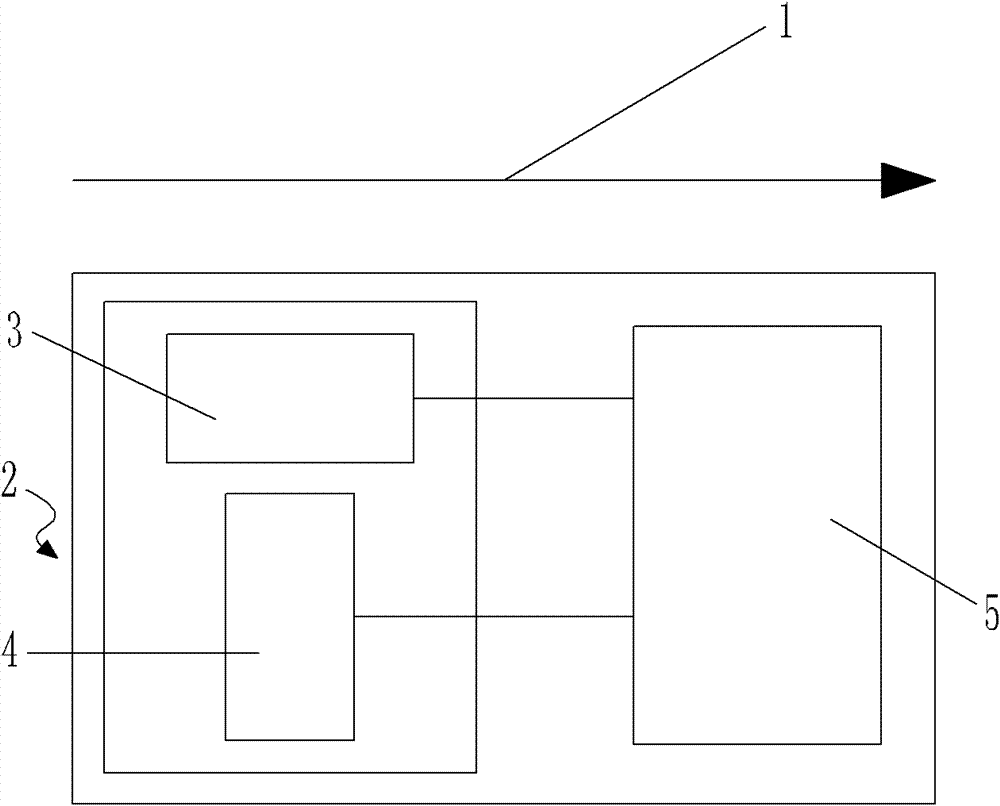Current measurement device
A current measuring device and current technology, applied in the direction of measuring devices, measuring electrical variables, voltage/current isolation, etc., can solve the problems of not being able to support super large current measurement, measurement accuracy, poor temperature characteristics, and low linear measurement range, etc. Achieve the effects of wide linear measurement range, good temperature characteristics and low power consumption
- Summary
- Abstract
- Description
- Claims
- Application Information
AI Technical Summary
Problems solved by technology
Method used
Image
Examples
Embodiment 1
[0021] Embodiment one: as attached figure 1 As shown, the current measuring device includes a measuring unit 2, and the measuring unit 2 includes a first sensor 3 arranged parallel to the tangential direction of the magnetic field generated around the conducting wire and a second sensor arranged parallel to the first sensor 3 4. The first sensor 3 is a TMR sensor, and the second sensor 4 is a Hall sensor. The dedicated ASIC chip 5 is packaged together, and the electromagnetic principle of the Hall sensor is as attached figure 2 As shown, where Iin+ and Iin- are the current input terminals, which are input from opposite ends of the diaphragm, and Vout+ and Vout- are the output voltage terminals, which are respectively drawn out from the direction perpendicular to the surface of the diaphragm, so that the magnetic field around the current-carrying wire The direction of 1 is perpendicular to the direction of the input circuit and the output voltage. According to the working...
Embodiment 2
[0022] Embodiment two: as attached image 3 As shown, the current measuring device includes a measuring unit 2, and the measuring unit 2 includes a first sensor 3 parallel to the tangential direction of the magnetic field 1 around the conducting wire and a second sensor perpendicular to the first sensor 3. 4. The first sensor 3 is a TMR sensor, and the second sensor 4 is a Hall sensor, both of which are respectively connected to a sensor-specific ASIC chip 5 that matches both, and the first sensor 3 and the second sensor 4 and the sensor-specific ASIC chip 5 are packaged together, and the electromagnetic principle of the Hall sensor is as attached Figure 4 As shown, where Iin+ and Iin- are the current input terminals, which are input from the opposite ends of the diaphragm, Vout+ and Vout- are the output voltage terminals, and are respectively drawn from the other pair of opposite ends of the diaphragm, so that the current-carrying wire The direction of the surrounding ma...
Embodiment 3
[0023] Embodiment three: as attached Figure 5 As shown, the current measuring device includes a measuring unit 2, and the measuring unit 2 includes a first sensor 3 parallel to the tangential direction of the magnetic field 1 around the conducting wire and a second sensor 3 arranged at an angle θ with the first sensor 3. Sensor 4, wherein, 0° Figure 6 As shown, define the component of the magnetic field 1 around the current-carrying wire in the direction perpendicular to the second sensor 4 as H', then the H' measured by the second sensor 4=H×cos(π-θ), so H' is less than H, so use the TMR sensor with a lower range to measure a component of the magnetic field 1 around the current conducting wire, and then calculate the size of the magnetic field 1 around the current conducting wire through the relevant formula, so as to realize the measurement of the current in the current conducting wire In this embodiment, the Hall sensor with a higher range is not needed, and the sensiti...
PUM
 Login to View More
Login to View More Abstract
Description
Claims
Application Information
 Login to View More
Login to View More - R&D
- Intellectual Property
- Life Sciences
- Materials
- Tech Scout
- Unparalleled Data Quality
- Higher Quality Content
- 60% Fewer Hallucinations
Browse by: Latest US Patents, China's latest patents, Technical Efficacy Thesaurus, Application Domain, Technology Topic, Popular Technical Reports.
© 2025 PatSnap. All rights reserved.Legal|Privacy policy|Modern Slavery Act Transparency Statement|Sitemap|About US| Contact US: help@patsnap.com



